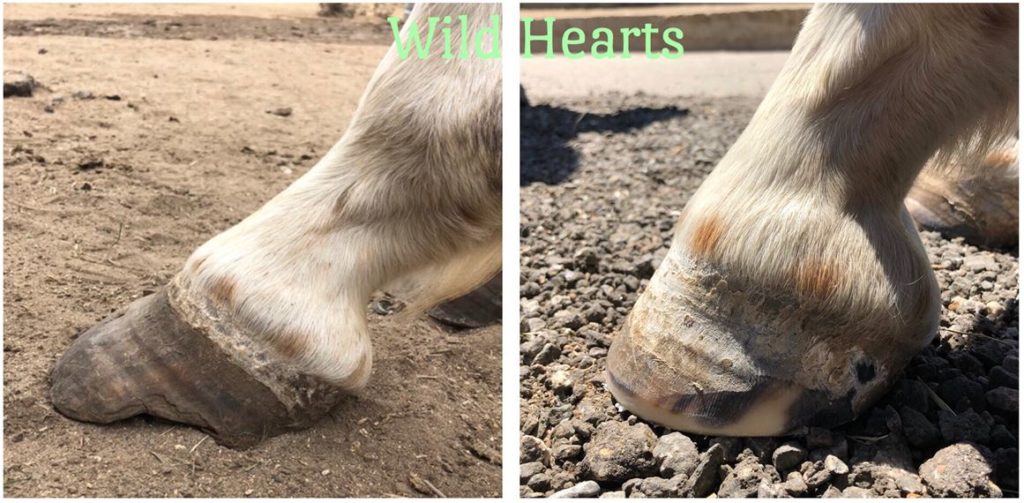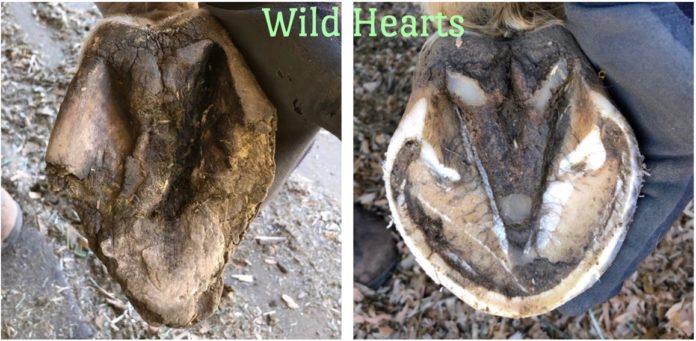We love to do before and after photo comparisons. They’re fun and educational for us trimmers and also for our clients, the horse owners. I’m often surprised at how much has changed.
I usually take “before” photos at every first trim we do, and highly recommend that owners do this as well with their horse’s feet. A quick picture from your phone can help you track any changes that occur from trim approach, age, terrain, diet, etc.
Recently one of our longest-term clients acquired 4 never-been-handled Paint youngsters from a rescue organization. They ranged from 1 to 3 years old, were not halter broke and had certainly never had their feet trimmed. After the new owner got these babies used to being handled and picking up their feet for a few moments at a time, it was our turn to get them on their way to better health by trying to reset their overgrown hooves. It was exciting to take the ‘before’ photos of this group, knowing how much they would change!

One downside to working with young horses like this is they can be a bit harder to work on than foals, partly because they’re bigger and stronger! We also can’t make changes to their straightness any longer, so in this case we set to work making their feet the best we could by getting the long toes and overgrown bars out of the way to grow in better angles.
A good thing about working with babies is that they are often very forgiving of changes made to their hooves – they aren’t “set” yet. In our experience they adapt to changes quickly and successfully. These feet were no exception. The horses were all sound and happy after the very first trim and have been progressing that way throughout their cycles thus far.

In cases like this and especially where I have to work quickly before the baby loses his focus and patience, it’s about prioritizing what’s done to the foot to make the most positive change for the horse. Aside from prioritizing comfort, which forges the nicest feet and produces a heel first landing, I almost always prioritize breakover.
That was the case with this group.
The weak, underrun heels were a symptom of the long toes. Once they were out of the way the feet popped right up! In my opinion, the crazy overgrown bars were being pulled by the toes as well, yet another reason to relieve that leverage on the foot. One of the fillies in the group had pretty bad separation but we played it slow. I suspected it was from the mechanical leverage, so waited to see if it would grow out – and it did. It isn’t always easy to soak and wrap a youngster!
As a side note all of the horses in this group were evacuated due to the tragic Woolsey Fire that burned through their canyon in Southern California in November 2018. They spent a couple of weeks in small pens at a fairground evacuation area before returning home. Because their pasture fencing was burned, they were moved to a different area on the property, and are now experiencing a very wet, but welcome winter. Lots of exciting life events for this little group!
They’re fun for me to to work on. To see their minds growing and worlds expanding, as well as their feet improving so nicely in their “afters,” is really rewarding.





